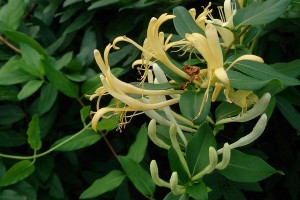Japanese honeysuckle Honshu white admiral
History in New Zealand
The Honshu white admiral is endemic to the island of Honshu, Japan. It was first imported by Manaaki Whenua - Landcare Research into containment in 2010. However, because the butterflies would not mate in containment, host-specificity testing was later undertaken in Japan. Permission to release this butterfly was granted by the EPA in 2013.
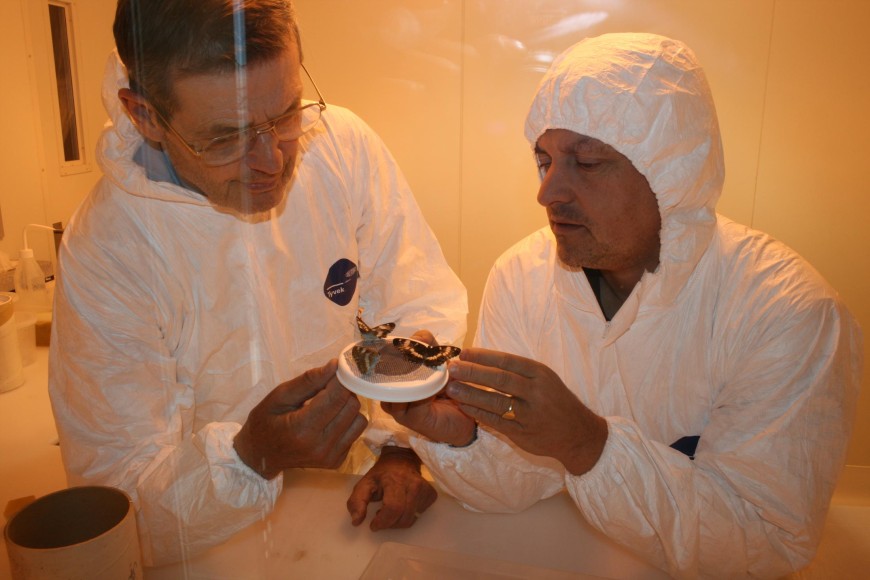
Image: Honshu white admiral butterfies in containment.
Field releases began in spring 2014, and the butterfly has successfully established at Karangahake in the Waikato from where it has begun spreading, with recent sightings in Tairua, Te Aroha and Waihi Beach. The biocontrol agent is one of two agents released to attack Japanese honeysuckle in New Zealand.
How would I find/recognise them and what is their lifecycle?
Adults emerge in the spring. Look for them during the warmer months flying about Japanese honeysuckle or resting on the leaves. Adults are black with white markings on the top of wings and grey, reddish-brown, white and black markings underneath. Their wingspan is approximately 60 mm. Males and females look similar.
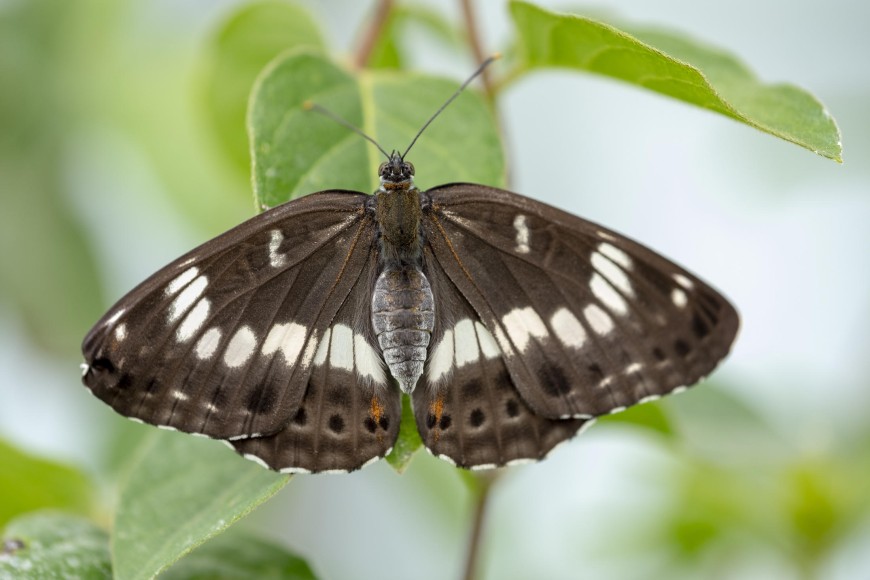
Image: Honshu white admiral butterfly dorsal view.
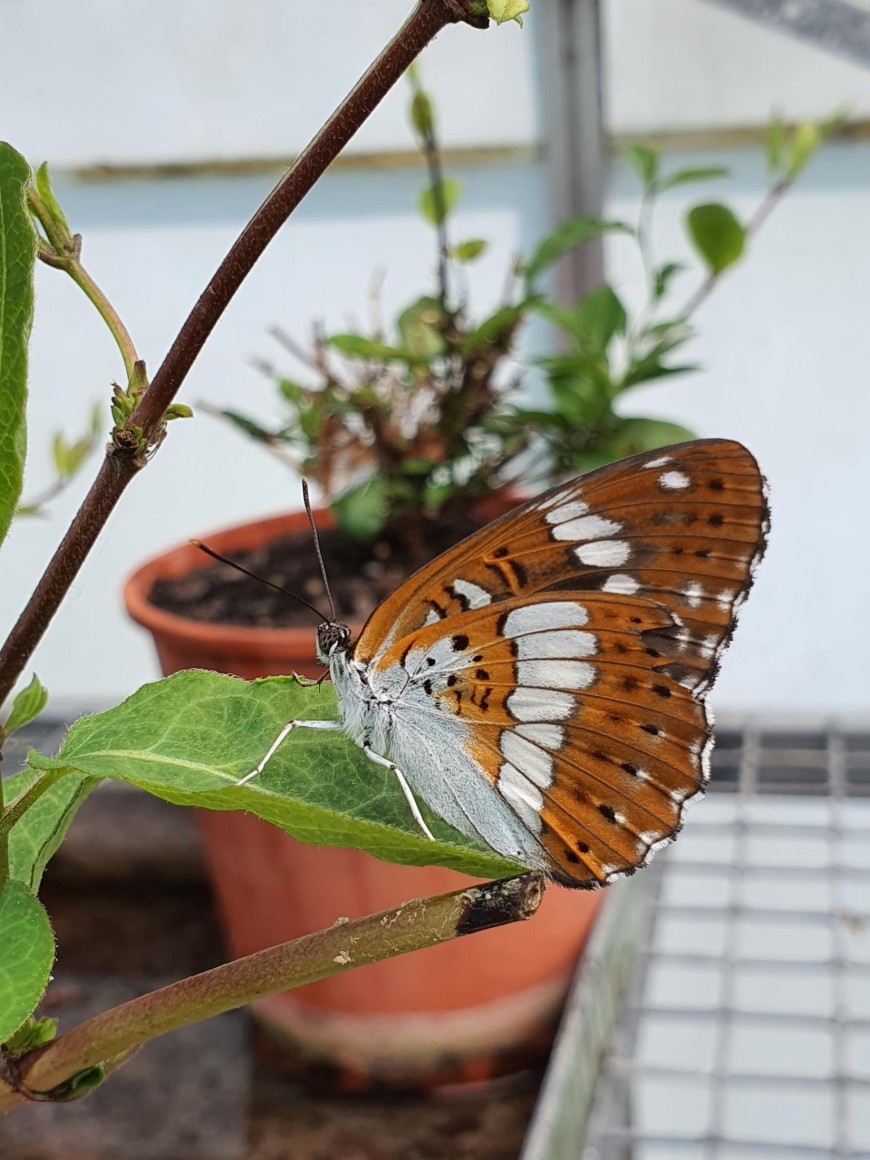
Image: Honshu white admiral butterfly side view.
Females lay pale yellow eggs singly on upper and lower surfaces of leaves. Eggs hatch after about a week.
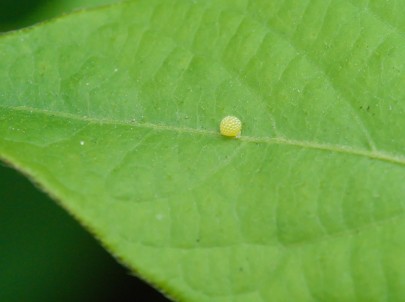
Image: Honshu white admiral butterfly egg.
Initially, the caterpillars are brown and lack spines. Young larvae use silk and frass to build highly characteristic pier-like extensions to the midribs of leaves where they rest when not feeding.
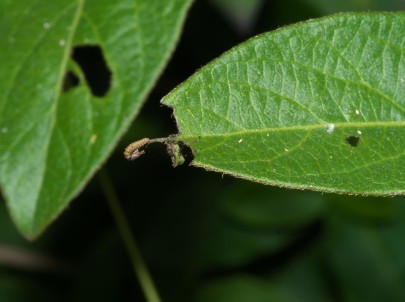
Image: Honshu white admiral butterfly caterpillar resting on midrib.
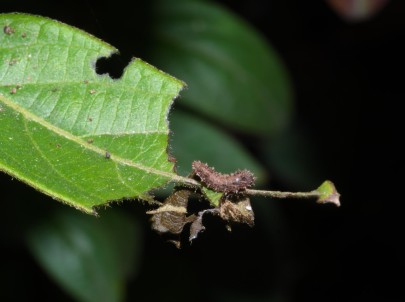
Image: Honshu white admiral butterfly caterpillar resting on midrib.
As they grow, they turn green with several spiky brown protrusions. The caterpillars feed on the foliage, developing and growing through 5 instars.
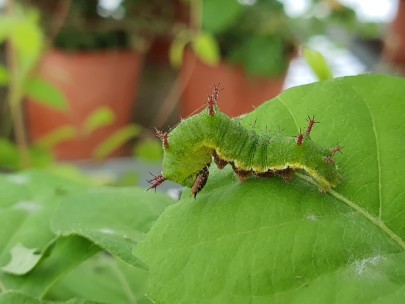
Image: Honshu white admiral butterfly late instar caterpillar.
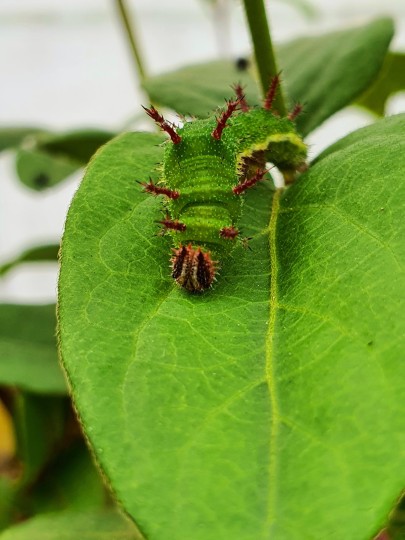
Image: Honshu white admiral butterfly late instar caterpillar.
Once fully grown the caterpillars form a light green and brown pupal case suspended from the plant. New adults emerge after a week.
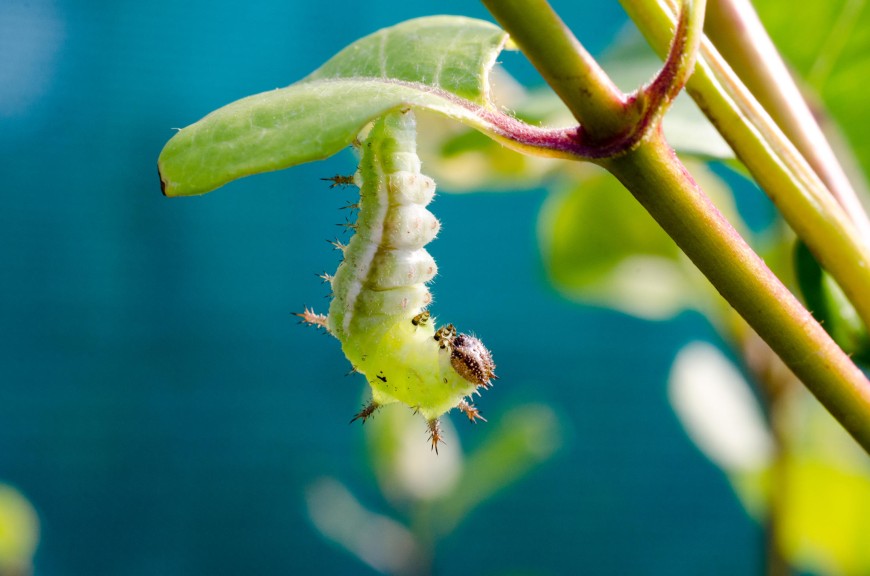
Image: Honshu white admiral butterfly caterpillar preparing for pupation.
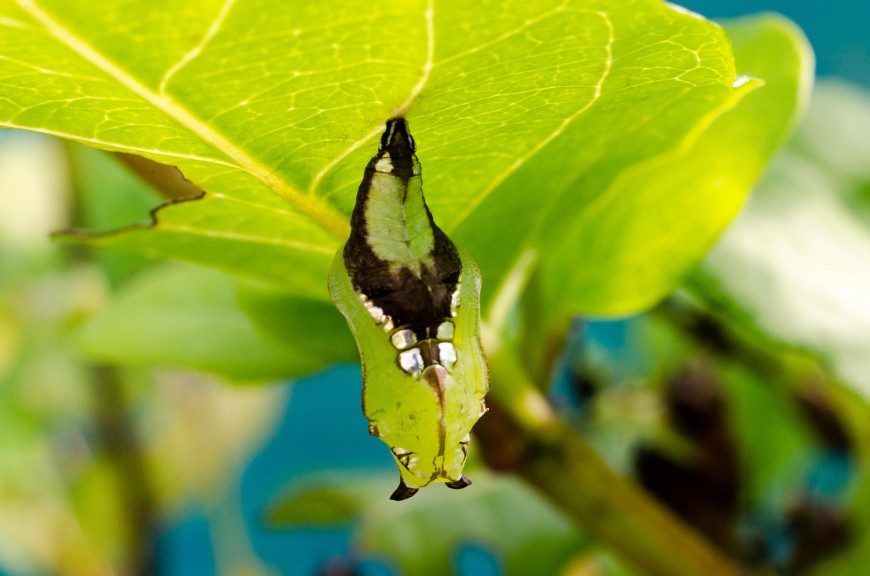
Image: Honshu white admiral butterfly pupa.
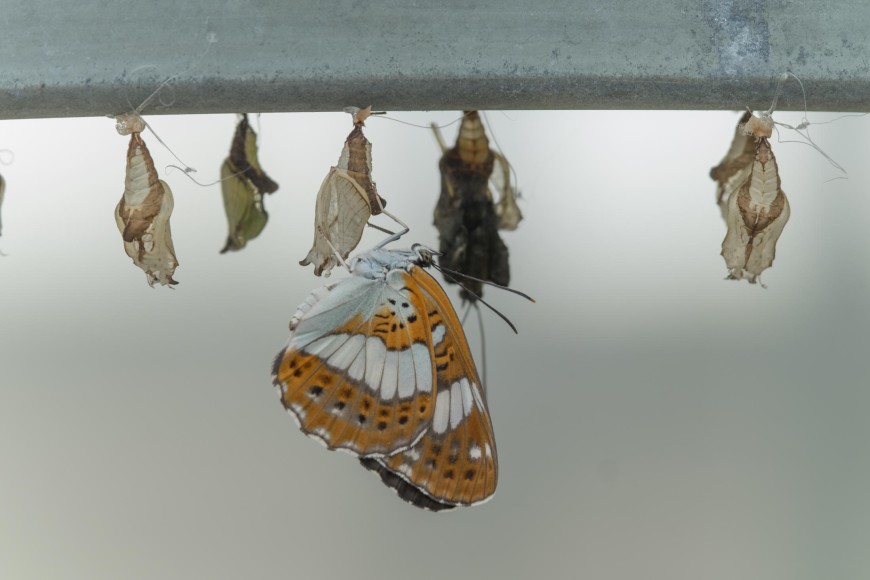
Image: Honshu white admiral butterfly emerging from its pupa.
Development from an egg to an adult takes as little as 8 weeks at warm temperatures. Adults can live for up to a month and the females lay 150-200 eggs over a 2-4-week period. There are 1-4 generations produced each year, depending on how warm the site is.
Image: Honshu white admiral butterflies.
Later in the season, larvae are triggered into hibernation once daylight falls below 13–14 hours. Larvae spend winter inside shelters fashioned from leaves hanging from stems. There are no other butterflies in New Zealand that you are likely to confuse with the Honshu white admiral.
How do they damage Japanese honeysuckle?
The caterpillars damage the foliage and when present in large numbers can defoliate plants.
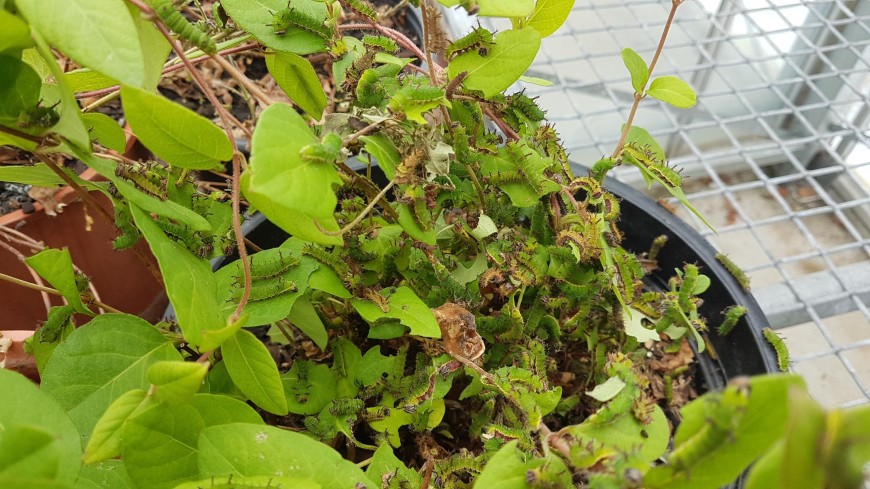
Image: Honshu white admiral butterfly caterpillar damage.
Will they attack other plants?
The Honshu white admiral is a Japanese honeysuckle (Lonicera japonica) specialist, but testing showed they can also successfully rear through on Himalayan honeysuckle (Leycesteria formosa), another invasive weed in New Zealand. Testing showed that caterpillars can feed on some other ornamental climbing forms of honeysuckle with soft leaves but given attack on other Lonicera species in Japan is extremely rare, this is expected to be the case in New Zealand too. The Honshu white admiral is not able to attack the most commonly grown ornamental Lonicera (Lonicera nitida).
How effective are they?
It is too soon to know what impact the butterfly will have here. It is hoped that it will become abundant as few parasitoids, that are likely to attack the butterfly, are believed to present in New Zealand. However, predation by invasive social wasps may limit butterfly numbers.
How can I get the most out of this agent?
If the butterfly establishes at initial release sites, it would be worth helping to establish them in all areas where they are needed. The adults can fly and will disperse over time but helping to shift them about will speed up the process.
How do I select a release site?
Read Guidelines for selecting release sites for biocontrol agents.
How do I collect them for release at other sites?
During the warmer months, collect eggs or young caterpillars (older caterpillars are well camouflaged and difficult to see) and transport them on foliage in a chillybin to their new home. You should aim to shift at least 500 eggs or caterpillars, preferably more.
At the new site, wedge the caterpillars into the honeysuckle plants so they can easily move across.
How do I manage the release sites?
Avoid any activities that will interfere with the butterfly, such as herbicide application. If you need to undertake control measures, then avoid the release site.
Key contact


